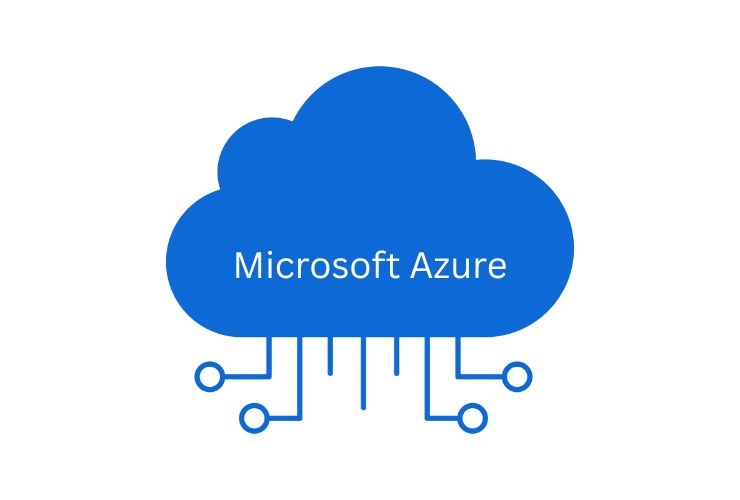The global cloud computing landscape is changing rapidly. Microsoft Azure continues to be recognized as a flexible and trusted platform for all types of organizations in 2025. Both startups and large enterprises are moving their workloads to Azure due to its scalability, innovation, and security. This blog analyzes the main reasons many organizations opt for Microsoft Azure. It also addresses why Azure is a higher priority platform for digital transformation across the globe.
1. Scalability and Flexibility for Modern Workloads
One of the primary reasons organizations are choosing Microsoft Azure is its scalability and capacity advantages. Azure gives organizations flexibility to scale resources up or down as market conditions dictate and their business is changing — ideal for seasonal workloads, trying out new applications, or expanding into new markets without taking on large investment costs up front for an IT infrastructure.
The pay-as-you-go appointment model also means organizations only pay for what they use, giving them better cost management and optimization of resources.
2. Unmatched Security and Compliance
With evolving cyber-threats, Azure’s comprehensive security infrastructure gives organizations peace of mind. With Microsoft’s layered defense, Azure Security Center, and Azure Sentinel, organizations can monitor, detect, and respond to threats in real time.
Further, Azure has more than 90 compliance certifications, including GDPR, ISO 27001, and HIPAA, which makes it the best choice for regulated industries such as finance, healthcare, and government.
3. Hybrid Cloud Capabilities
Unlike other cloud vendors, Azure provides a hybrid cloud model through Azure Arc and Azure Stack. This allows businesses to manage workloads across on-premises data centers, multi-cloud platforms, and edge infrastructure using a single control plane.
Using Azure’s flexibility, organizations can modernize their infrastructure and not be forced to fully migrate off existing platforms.
4. Built-In AI and Machine Learning Services
Azure’s native AI and machine learning services empower organizations to innovate faster. Azure AI Studio, Cognitive Services, and Azure Machine Learning are just a few ways organizations can build intelligent applications, automate repetitive tasks, and extract insights from large datasets. In 2025, as AI adoption accelerates, Azure’s ready-to-use AI models and APIs give businesses a competitive edge in decision-making and customer engagement.
5. Cost Savings and Predictable Pricing Models
Cost control is a major concern for any organization migrating to the cloud. Azure provides flexible pricing options, reserved instances, and spot pricing, allowing businesses to save considerably compared to traditional IT architecture. Further, it supplies organizations with tools such as Azure Cost Management and Billing to help them monitor and optimize their costs — giving transparency and predictable costs planning.
6. Global Reach and Reliability
Azure features one of the largest cloud infrastructures of any cloud provider, with data centers in over 60 regions around the world. That global reach provides organizations and their customers with high availability, low latency, and disaster recovery. The platform also provides Service Level Agreements (SLAs), with up to 99.99% uptime, ensuring a reliable platform for mission-critical applications.
7. Integration with the Microsoft Ecosystem
For organizations already using Microsoft 365, Dynamics 365, or Windows Server, Azure easily integrates and drives productivity simultaneously for organizations managing tools in several services. The integrated suite of tools creates synergy that allows IT administrators to produce identity and data and application unification into one digital ecosystem, improving operational efficiencies.
8. Dedication to Sustainability and Innovation
Sustainability is a major goal of modern companies, and Azure supports that vision. Microsoft has committed to being carbon negative by 2030, and the number of Azure data centers running on renewable energy continues to increase. Companies that move to Azure are not only creating efficiencies in IT but also investing in a greener, more sustainable future.
Conclusion
In 2025, Microsoft Azure remains the leader in the changing landscape of cloud computing. it provides businesses with the secure, scalable and intelligent platform to innovate and grow. Futuristic capabilities, including AI integration, hybrid flexibility and sustainability, support targeted innovation based on the diverse needs of organizations.
Organizations can create change and adapt with confidence in a rapidly changing digital world. Digital transformation will continue to accelerate, and Azure will be the platform of choice. It combines the best of cloud within a global ecosystem you can trust with Microsoft.









